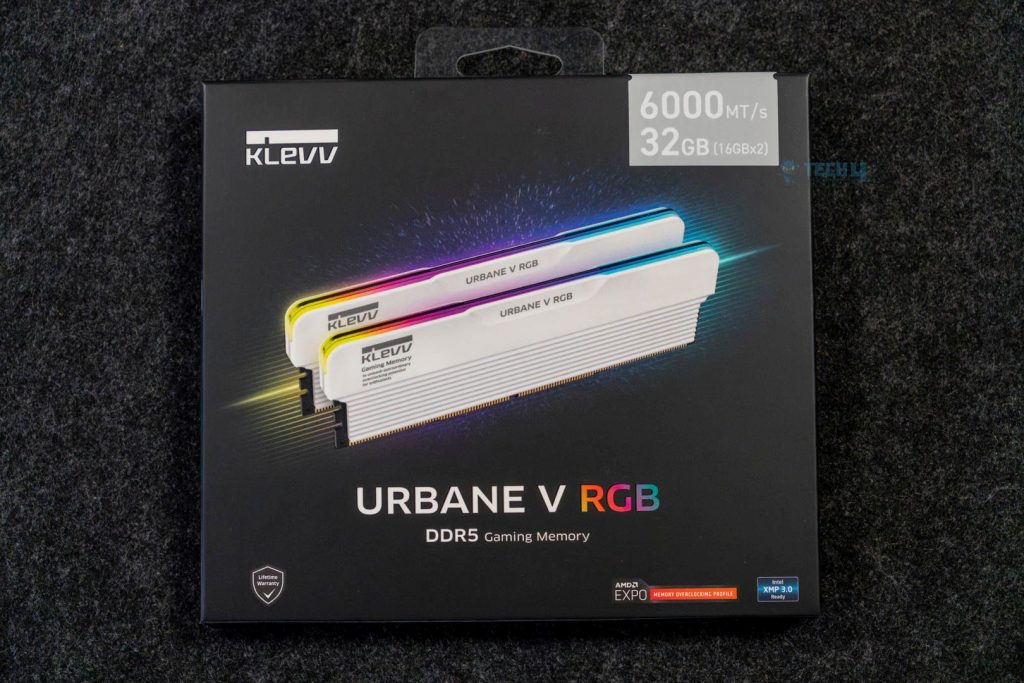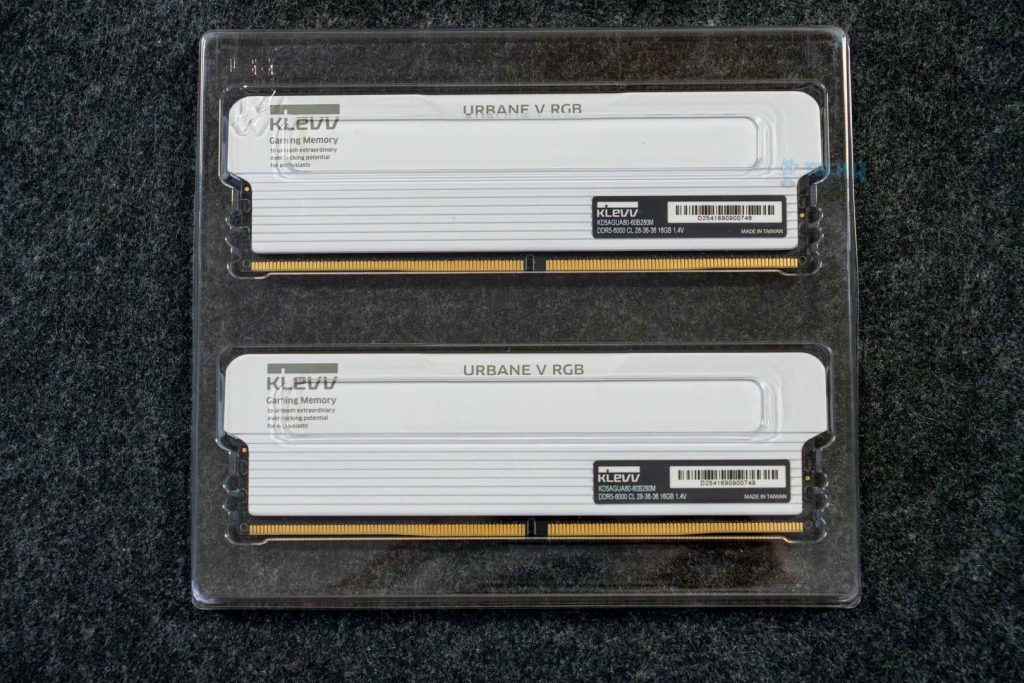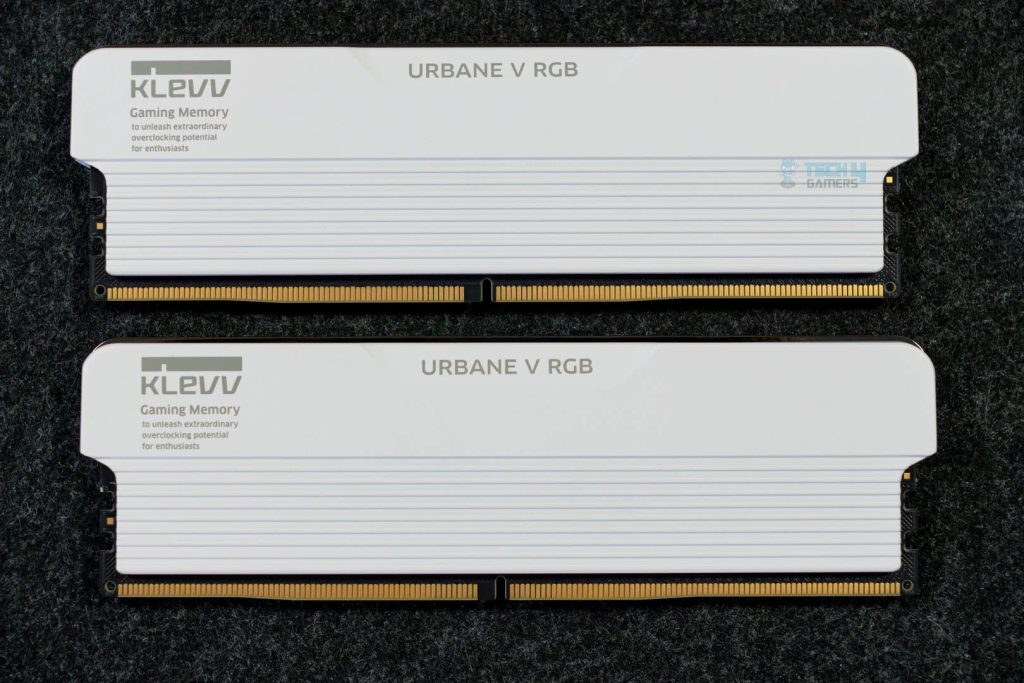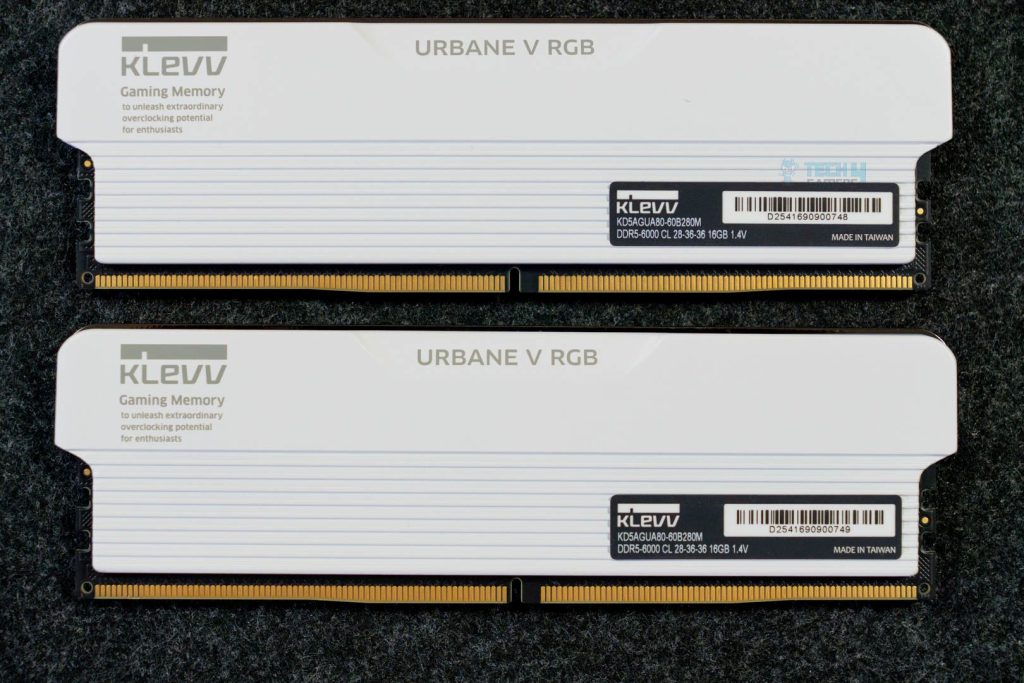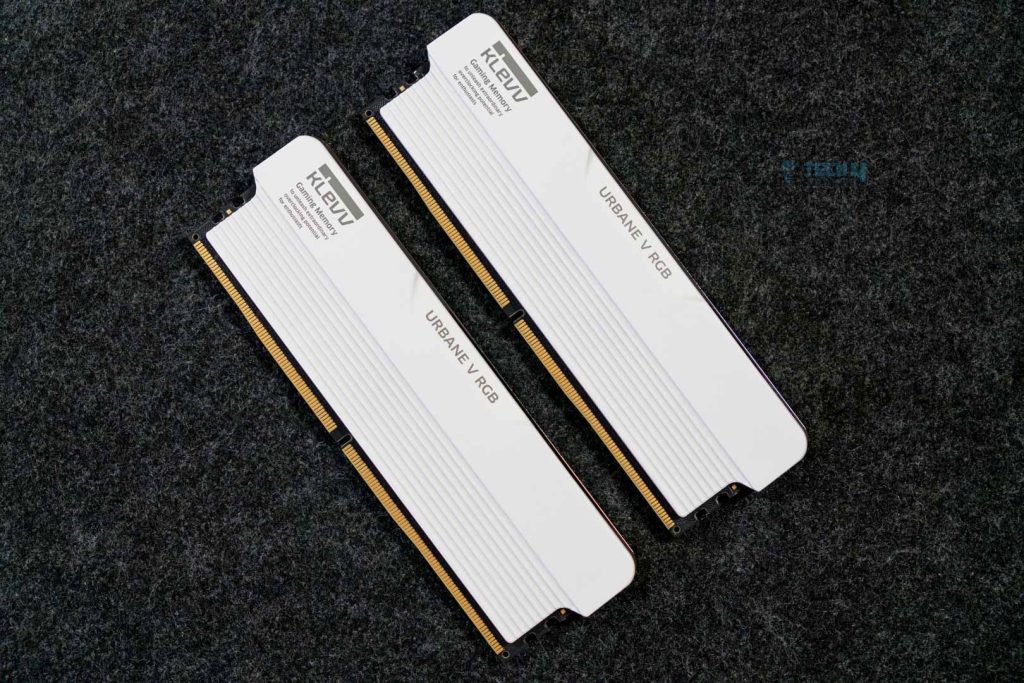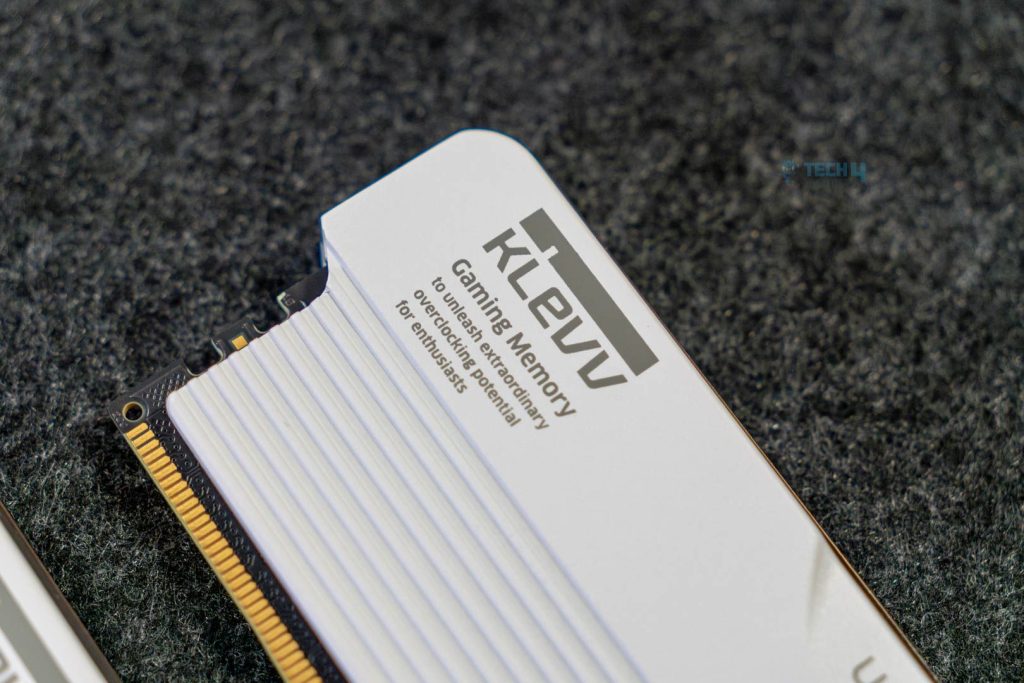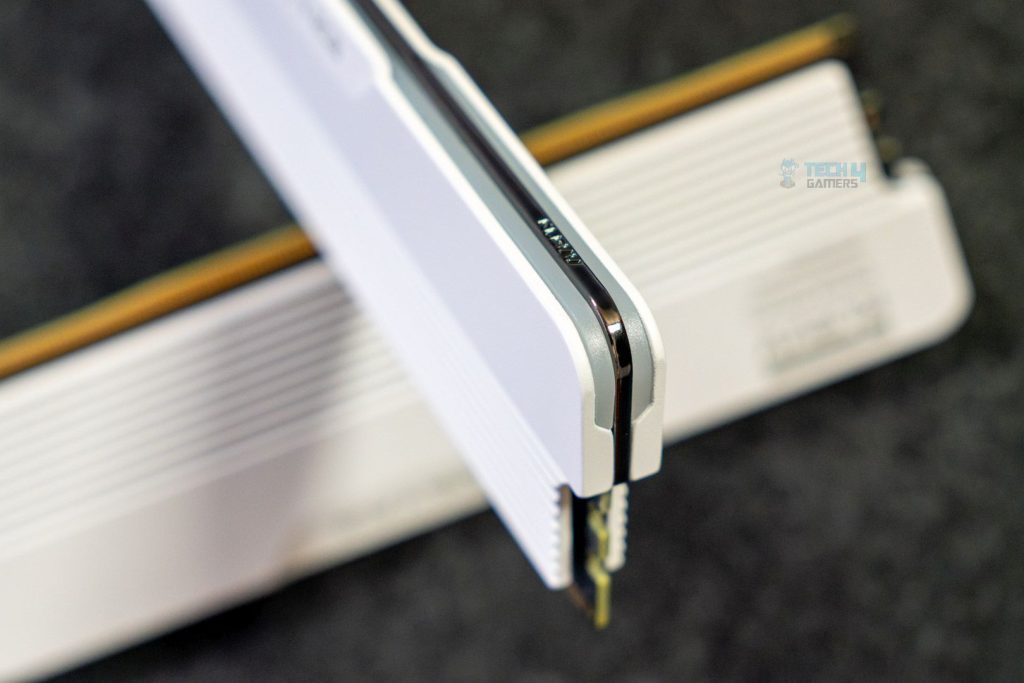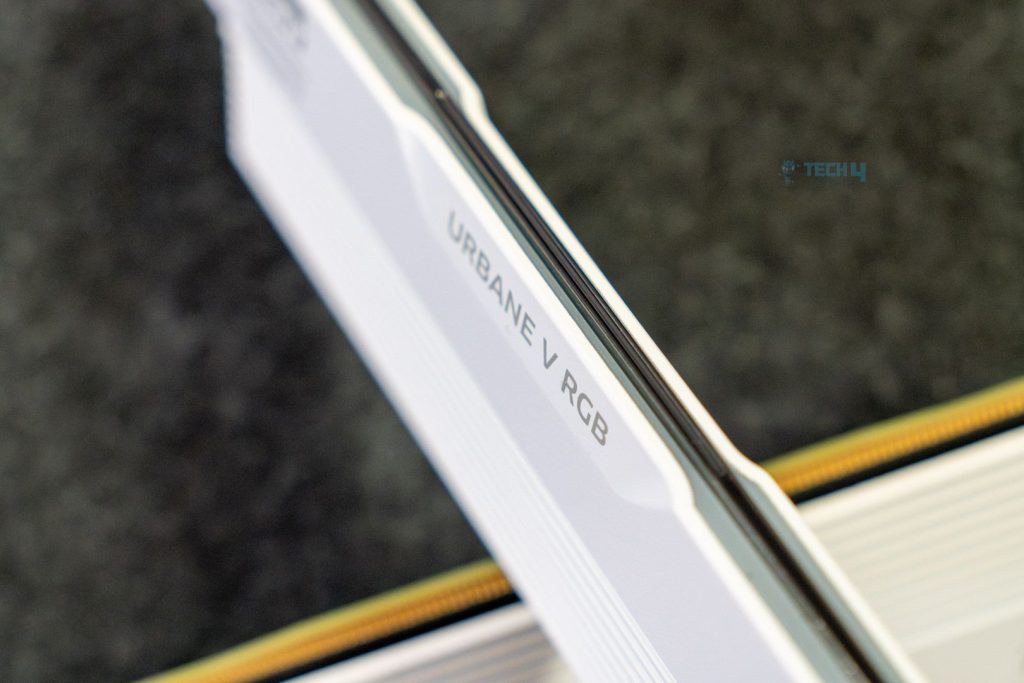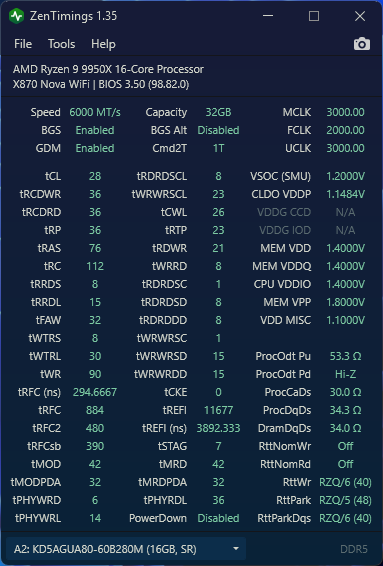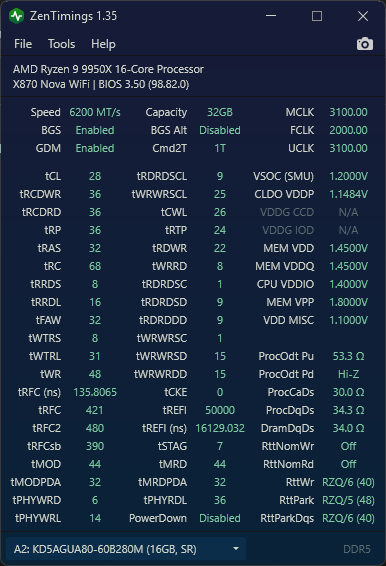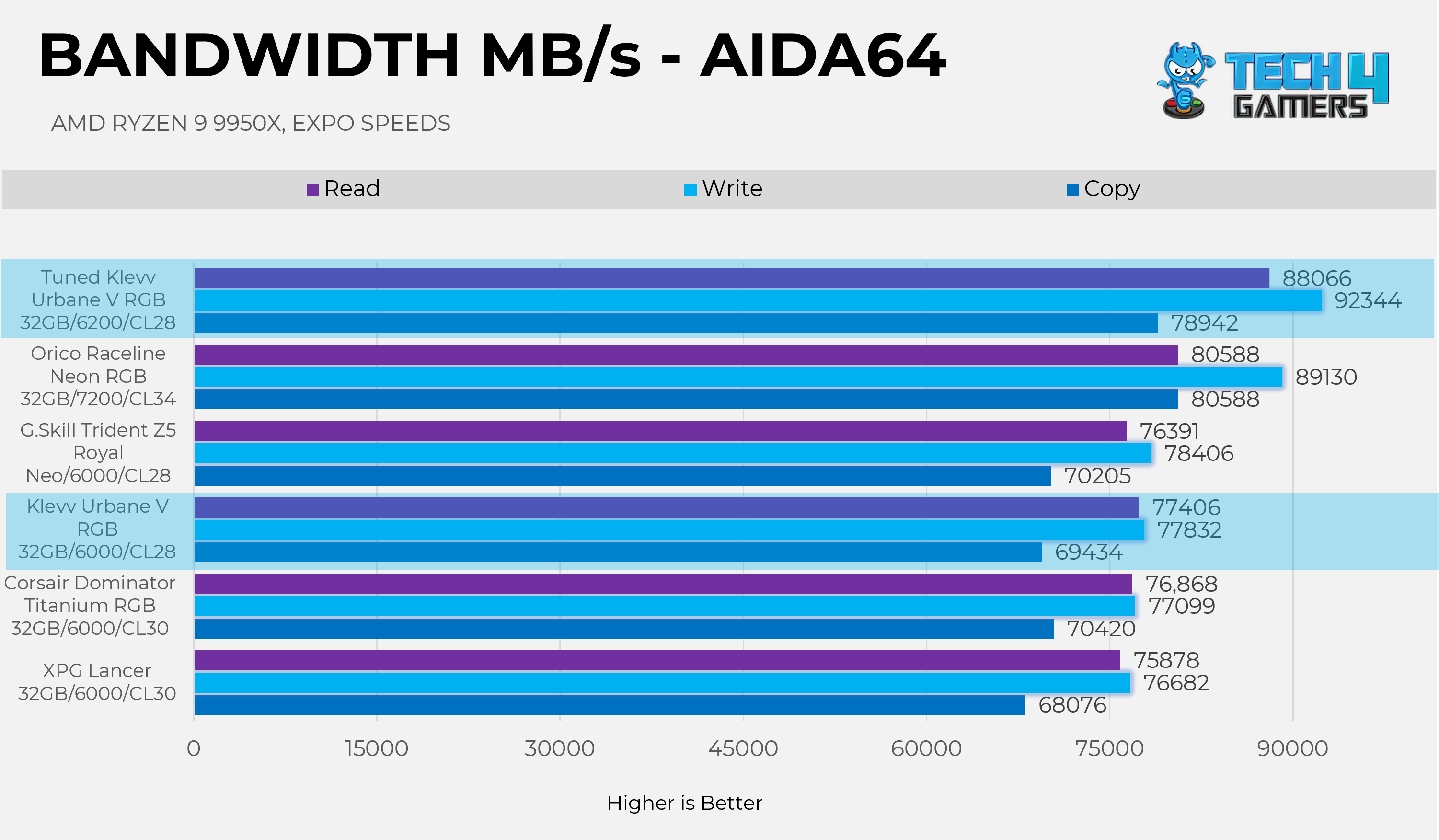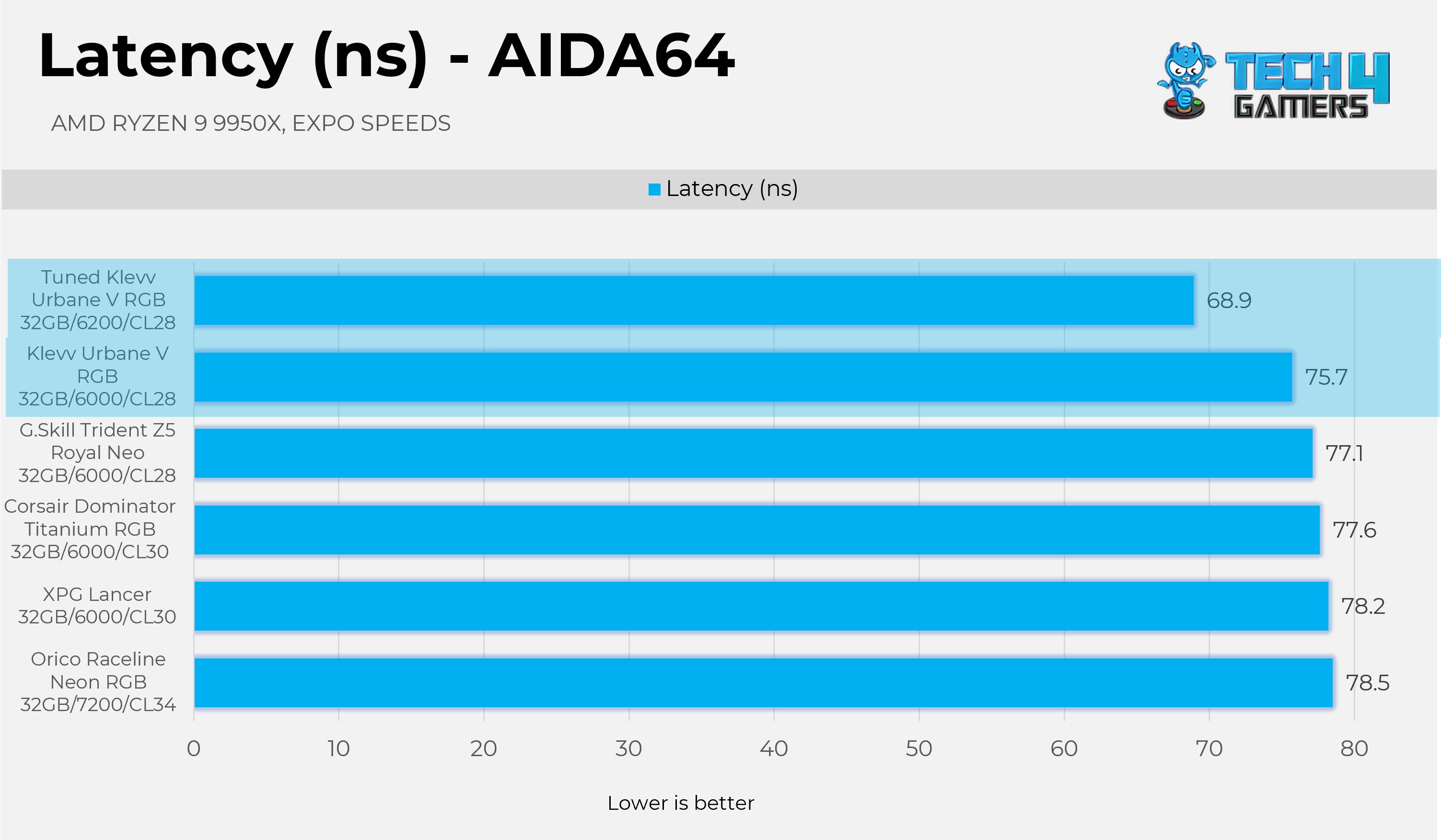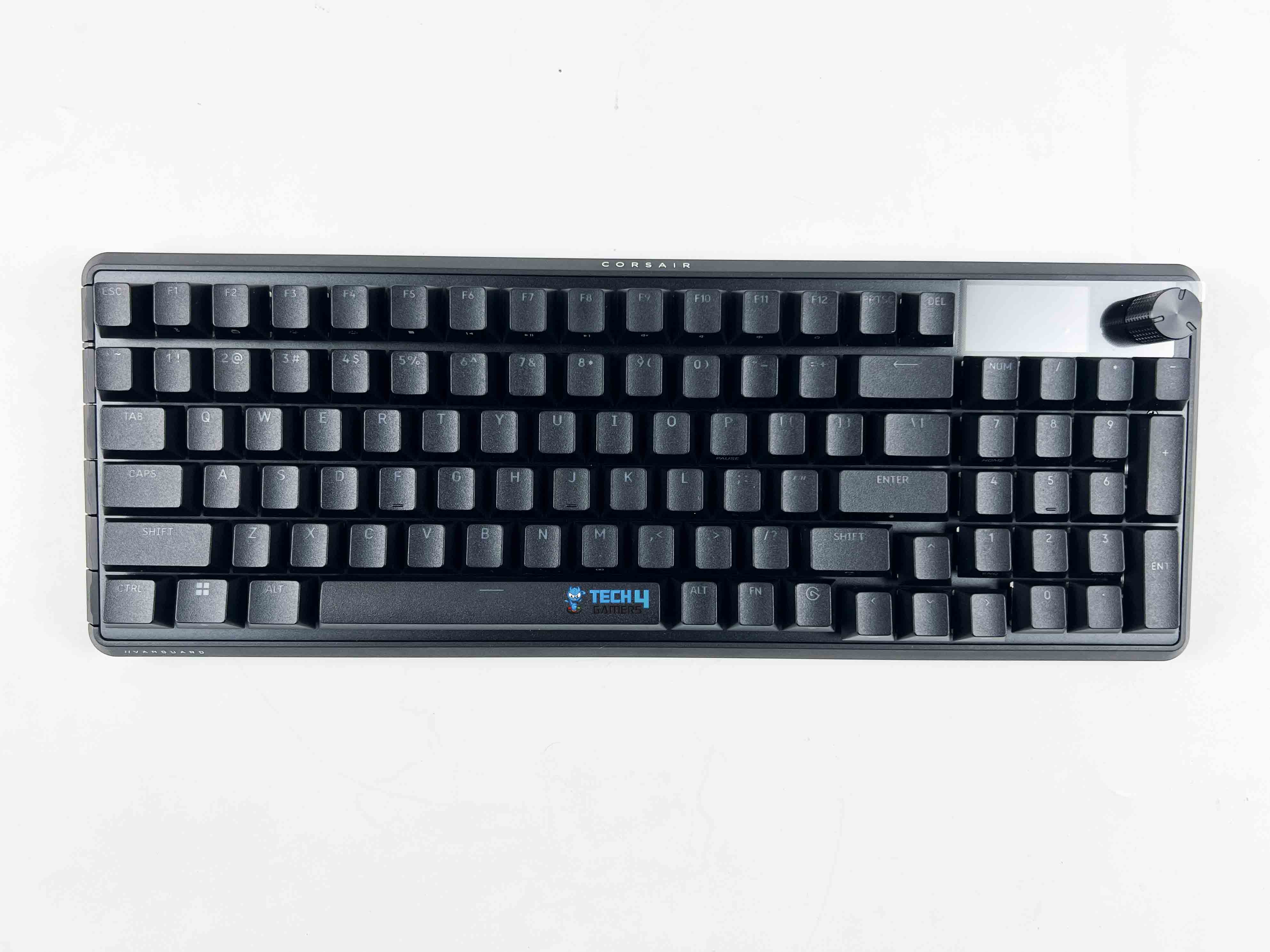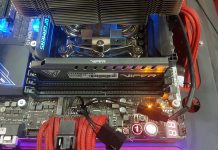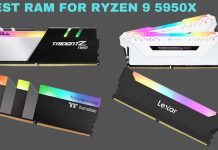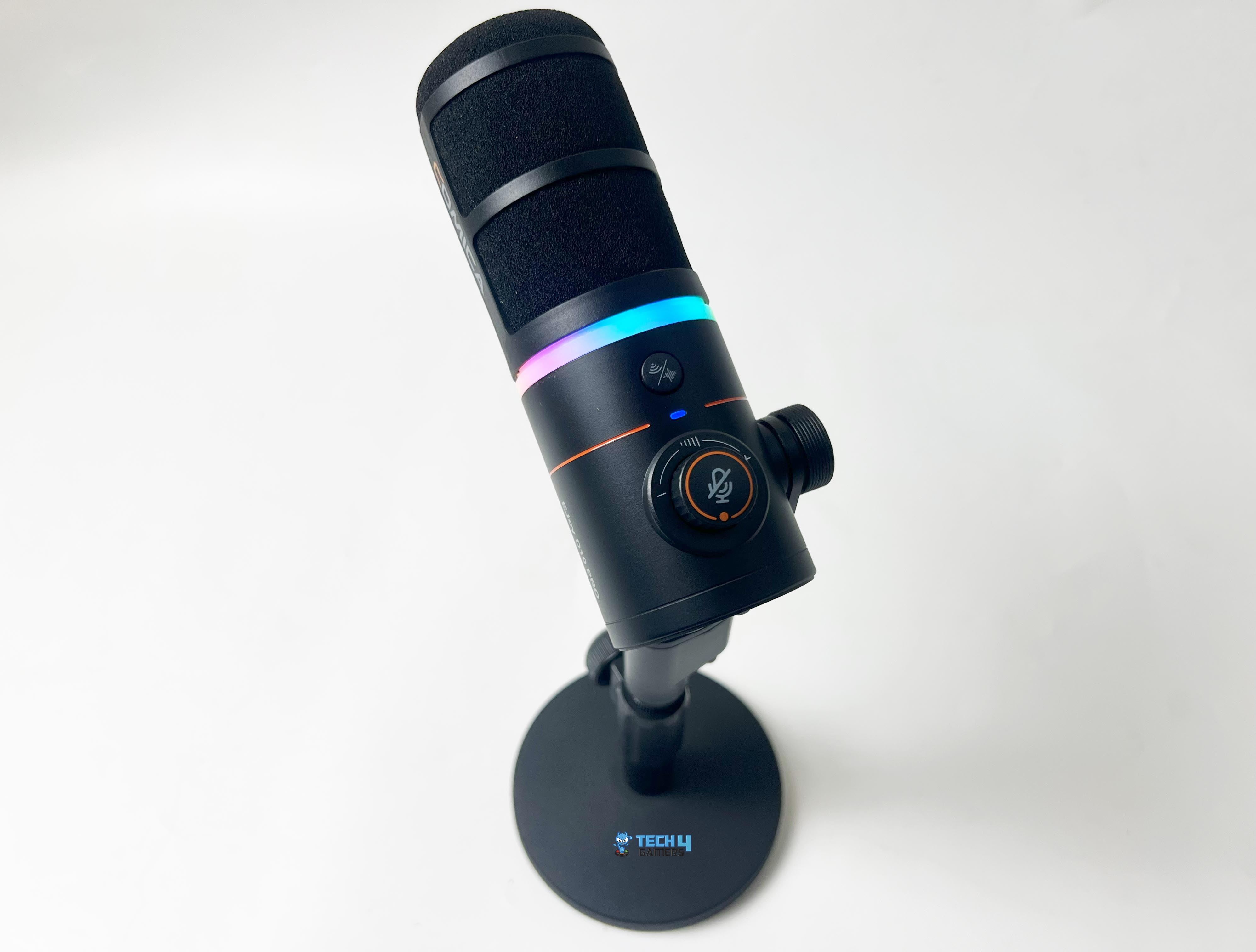Worth It?
Review Summary
The KLEVV Urbane V RGB 32GB 6000MT/s CL28 RAM offers strong performance with tight timings and great overclocking potential. Its compact design (42.5mm tall) ensures compatibility with large CPU air coolers, and it includes RGB lighting for aesthetics. While ideal for gamers and enthusiasts, it may not be the best choice for budget-conscious buyers or those with small form-factor builds.
Hours Tested: 4
Overall
-
Performance - 9.5/10
9.5/10
-
Build Quality - 9.5/10
9.5/10
-
OC Potential - 8/10
8/10
Pros
- Decent Timings
- Excellent Performance
- Great Overclocking Potential
- Sleek & Compact Design
- Decent RGB
Cons
- Loose Secondary Timings
- Availability
If you haven’t heard about KLEVV, it’s a sister company of SK Hynix. The brand is owned by Essencore Limited, which was established in 2014, and is part of the SK group. Klevv manufactures a range of memory and storage solutions designed for gamers, enthusiasts, and creators. Today, we’re reviewing one of their recently launched kits, which features the tightest timings of 6000 MT/s (MegaTransfer per second) and supports both Intel XMP and AMD EXPO.
Despite having powerful specifications, the RAM does not feature the chunky heatsink as you might have seen with other overclocked kits from other brands. We’ll get into the size detail in a bit. It has the ARGB, which is compatible with almost every motherboard on the market.
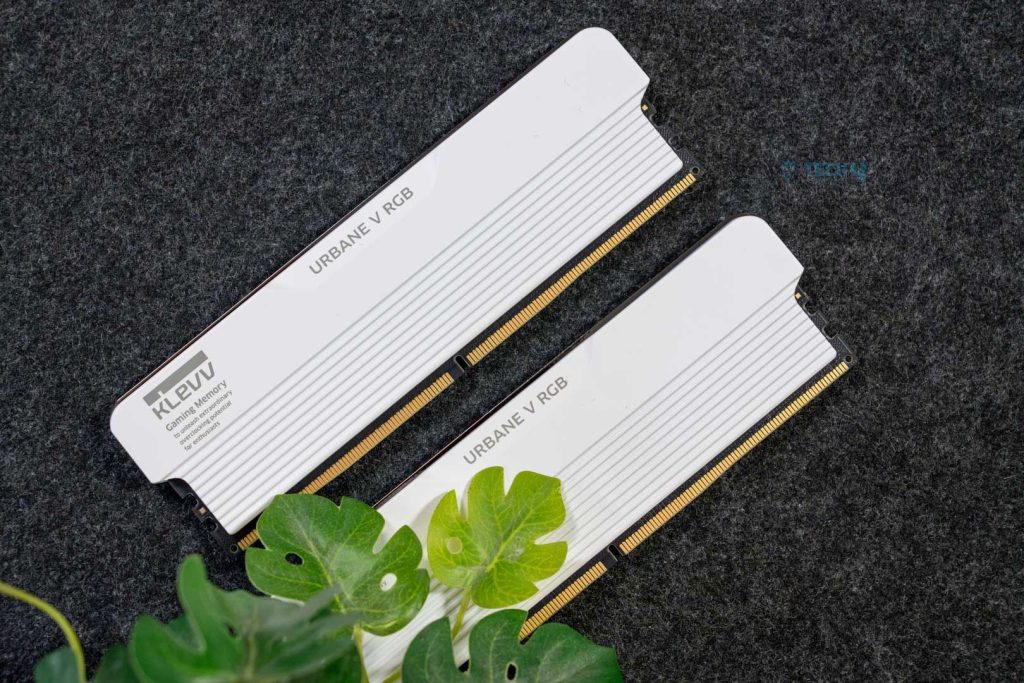
The Urbane V RGB model lineup comes in different flavours of timings and frequencies. The 6000MT/s and 6400MT/s kits come with capacities of 32GB (16 GB x 2), 48GB (24 GB x 2), and 64GB (32 GB x 2). If you aim to buy the higher frequency memory, for example, 6800/7200/7600/7800/8000/8200/8400 MT/s, you will only find the 32GB (16 GB x 2) and 48GB (24 GB x 2) Kits, with, of course, different timings for each kit.
In our review, we are only examining the 32GB (16 GB x 2) 6000MT/s CL28, a dual-channel kit that supports EXPO. Let’s talk about the specifications.
| KLEVV Urbane V RGB 32GB (16×2) 6000MT/s CL28 | Specifications |
|---|---|
| Speed | 6000 MT/s |
| Capacity | 32GB (16GB x 2) |
| Primary Timings | 28-36-36-76 |
| DRAM Components | Hynix-A, 16GB A-die |
| EXPO Support | Yes |
| XMP 3.0 Support | Yes |
| Dimensions (L x W x H) | 138.95 x 42.5 x 8.2 mm |
| Features | Minimalist Design, Supports RGB, 10-Layer PCB Design |
| Warranty | Limited Lifetime Warranty |
What Makes KLEVV Urbane V RGB 32GB (16×2) Kit Different?
The Klevv Urbane V RGB 32GB (16×2) is designed for enthusiasts, overclockers, and high-end gamers seeking maximum FPS output. With its exceptionally tight primary timings, which offer the lowest latency possible, it can deliver improved gaming responsiveness, particularly in frame times. It features a low-profile height of only 42.5mm, ensuring ample clearance for large and bulky air coolers while maintaining both performance and compatibility. This kit features a 10-layer PCB, which is usually found in high-performance or more advanced kits, as more layers in the memory can reduce interference and provide advanced signal integrity and stability at high frequencies and lower timings.
Packaging
Let’s take a look at the packaging
The rams come in a fancy cardboard box. On the front of the box, the render of the memory is also visible. The front also mentions the transfer speeds and the memory capacity. Additionally, at the bottom, it mentions that this RAM is EXPO and Intel XMP 3.0 compatible. The rams are packed in a plastic tray, and it doesn’t come with stickers, as you might have seen with other brands.
Closer Examination & Build Quality
Taking a closer look at the sticks.
The design strikes a balance between form and function overall. The aluminium heatsink has rounded top corners, and the linear grooves run along the sides, which Klevv claims increases cooling efficiency.
There is also branding and labeling etched in gray on the top center, which reads ‘Urbane V RGB’. Also have subtle labeling on the side that reads ‘Gaming Memory to unleash extraordinary overclocking potential for enthusiasts, which is a little too much for my liking.
The heatsink is 2mm thick and 42.5mm tall, which is compact enough to sit on the sockets without interfering with the large CPU coolers. Since these sticks also support RGB, there is a strip that runs along the top of the stick, featuring vibrant and diffused lighting effects.
RAM Timings and Further Details
It’s time to take a closer look at timings.
Let’s start with the primary timings we have: CAS tCL of 28 Cycles, which is a decent base latency. However, I do still have a few complaints. The primary timings are really respectable, but the secondary and tertiary timings are noticeably loose, leaving performance on the table, such as the tRFC, which could have been better here. However, here MEM VDD voltage is DRAM voltage, which is slightly on the higher range of 1.4V, but it’s still considered safe.
However, if you’re buying this RAM or have purchased this, looking to tune up further and stay in the safe boundary, you can set the tRAS to 60 or 64 cycles, and tRFC can be reduced to 640 cycles; it might work in most of the Hynix-based RAMs. However, tuning tertiaries’ timing wouldn’t give you much of the jump, but you can still tune them in steps.
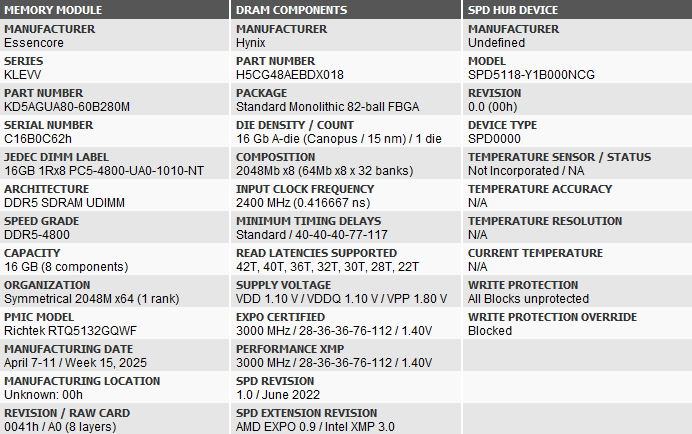
Taking a further deep look, we can confirm that each module is composed of 2GB x 8 memory ICs and was manufactured in April 2025. The DRAM carries the part number H5CG48AEBDX018, which proves it’s a Hynix-A die and is paired with Richitek RTQ5132GQWF PMIC (Power Management Integrated Circuit), which handles on-module power regulation for DDR5
RAM Timings Tuned
We have managed to tune the memory, and that has given us a decent boost in performance. We haven’t gone harsh; this is the moderate overclock with a few timing adjustments. We first increased our transfer speed from EXPO 6000MT/s to 6200MT/s. After that, we changed a few timings that include tRAS, tRC, tRFC and tREFI, and there is a slight voltage increment from 1.4v to 1.45v, which would stabilise the extra 200MT/s of transfer speed. We left other timings on auto as we feel they did not need any further adjustments, and of course, stabilizing each timing might consume so much time.
Here is the structured table of what we have tuned.
| Category | Original EXPO | Tuned |
|---|---|---|
| Transfer Speed | 6000 MT/s | 6200 MT/s |
| tRAS | 76 | 32 |
| tRC | 112 | 68 |
| tRFC | 884 | 421 |
| tREFI | 11677 | 50000 |
RGB Lighting
Let’s take a look at the RGB
The ARGB design looks decent and modern, also minimalist. If you can see, there are dual vertical light strips centred on each module. The lights are bright enough to stand out in the dark, and they do not scatter at all or look overdone. However, you can change the effects or adjust brightness in your motherboard RGB software easily.
Testing Methodology
How Do We Test Rams:
- We test the RAMs in various workloads, including synthetic, gaming, and real-world productivity tests, as memory bandwidth alone is not sufficient. Rams can be complicated at times, as faster speeds do not always translate into better performance. Therefore, we have tested various software to evaluate the performance of the RAMs.
Gaming Performance
- We have three popular games in our suite, and we’re intentionally running them at slightly more CPU-bound scenarios to see how much their performance scales with memory. Most of the time, the average FPS won’t scale as you’d like, but minimum frames, such as 1% lows and 5% lows, can significantly impact the gaming experience. The faster rams with the lower timings can generally smooth out the frame time graphs.
Preparing System:
- We test the RAMs at the EXPO or DOCP at the stock voltages and timings.
- We use the stock BIOS configuration, so memory context restore (MCR) / latency killer are enabled by default on the AM5 platform.
- The CPU and GPU are operating at the stock configuration.
- Our Primary Test system is assembled in Hyte Y70.
The following setup was used for testing:
- CPU: AMD Ryzen 9 9950X
- Motherboard: ASRock X870 Nova WiFi
- Cooler: Ocypus Sigma L36 Pro
- GPU: ZOTAC SOLID RTX 5080
- Case: Hyte Y70
- BIOS: v3.5 – AGESA ComboAM5 1.2.0.3g
- Windows Version: Windows 11 24H2 (OS Build 26100.6584)
Let’s go over the results.
Test – Memory Bandwidth & Latency
We’ll first check the RAM’s speed in raw numbers. Overclockers and enthusiasts generally use AIDA64 to validate memory tuning or performance.
AIDA64
Test – Office Productivity
PCMark 10 benchmarks overall system performance in real-world workloads, such as browsing, video conferencing, and Application start-up. Also, it tests Microsoft Office workloads, including Excel and PowerPoint. Faster RAMs can have an impact on productivity performance.
PCMark10 Applications
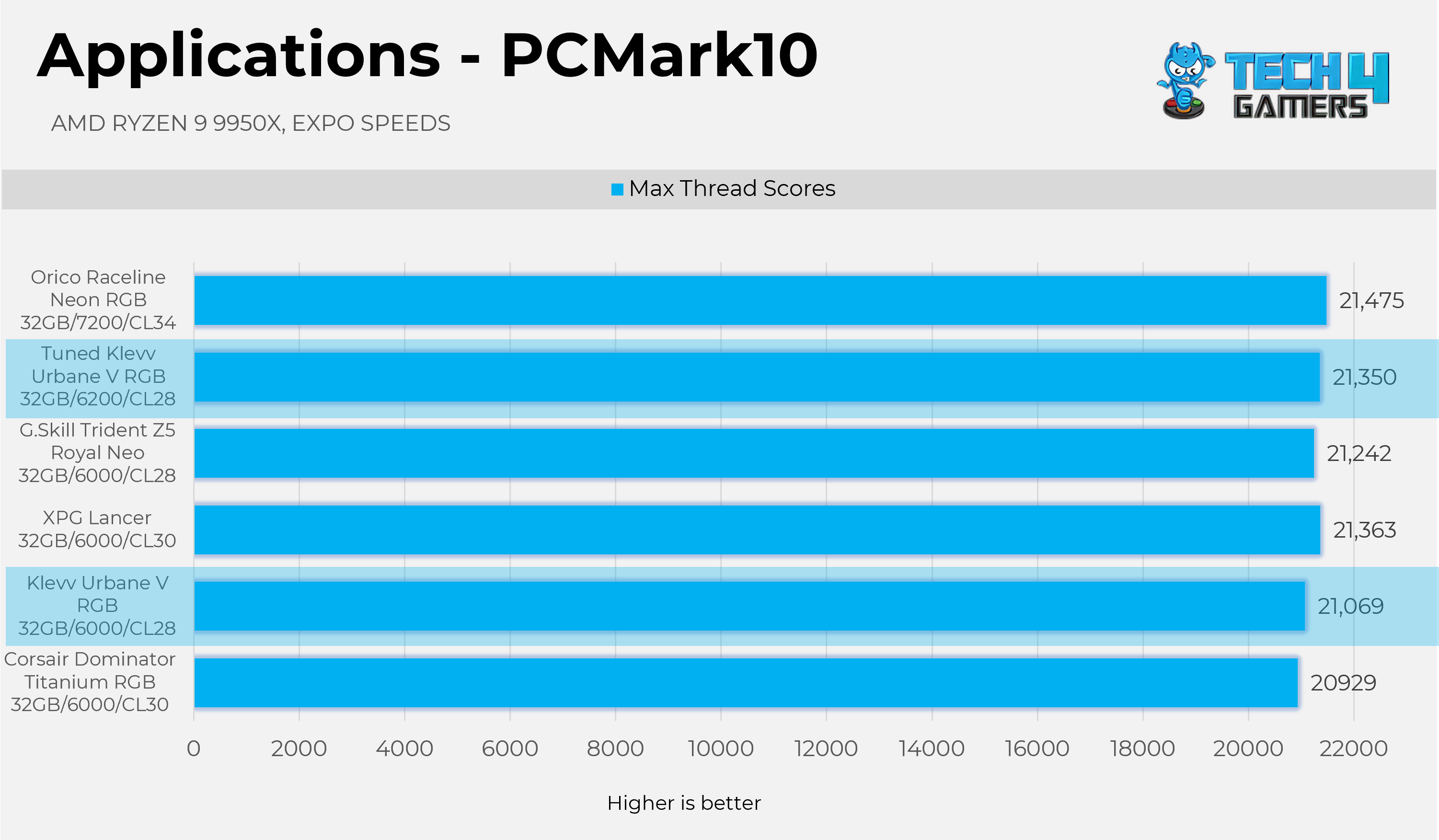
Test – Compute Performance
When you talk about RAMs, most people would only think of bandwidth and latency, as AIDA64 shows. Faster RAMs may yield better scores, such as higher bandwidth, but can those bandwidth scores translate into real-world performance? That’s where compute tests come in to see how fast the CPU can access the data in the memory.
Cinebench 2024
Based on Maxon’s Cinema 4D Rendering Engine, this tool measures how fast your CPU can render a complex scene. However, faster RAM can make a slight difference in the scores.
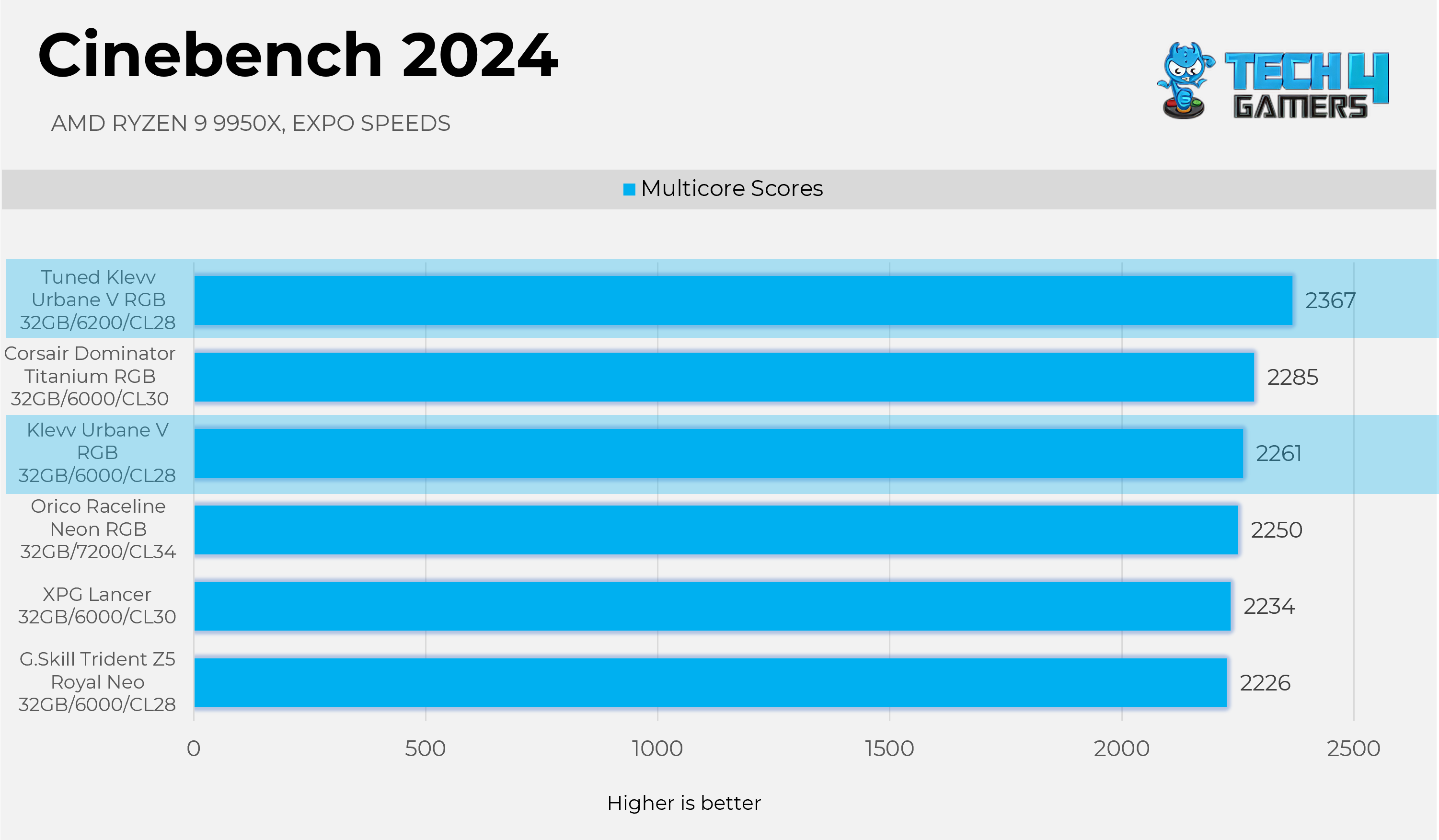
Y-Cruncher
Y-Cruncher can push the CPU and memory to their limits. This tool is very effective as it demonstrates how the system performs in extreme scientific/computational workloads. Y-Cruncher’s primary function is to calculate mathematical constants to a vast number of digits, which can simultaneously stress the CPU and memory. It’s an excellent tool for testing memory stability.
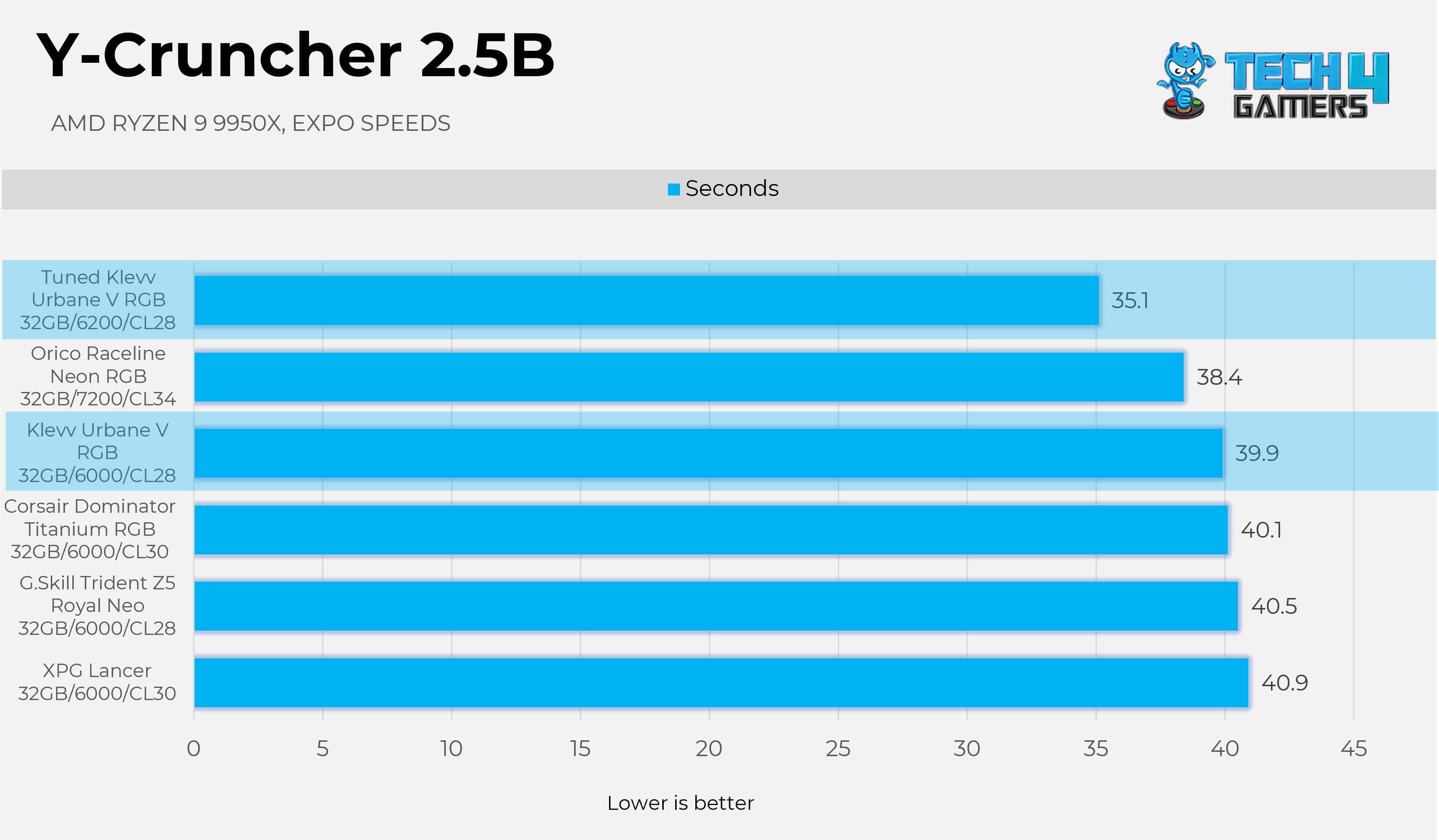
3D Mark CPU Profile
3DMark CPU Profile is an excellent tool for testing CPU Cores and Threads. However, faster RAMs can improve scores as the processor needs to access more data from memory in a multi-threaded workload, but the difference won’t be massive.
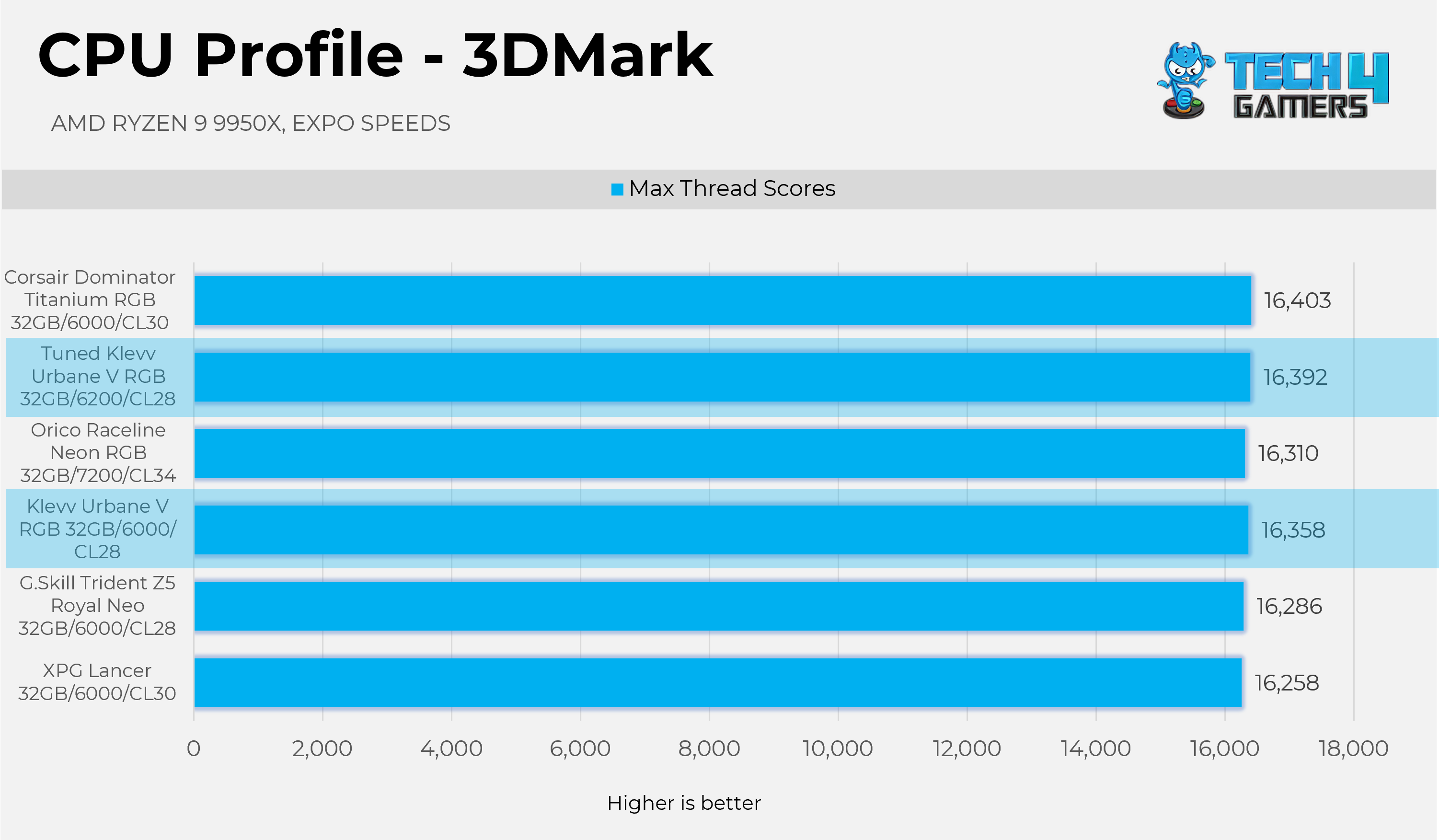
Test – Gaming
Cyberpunk 2077
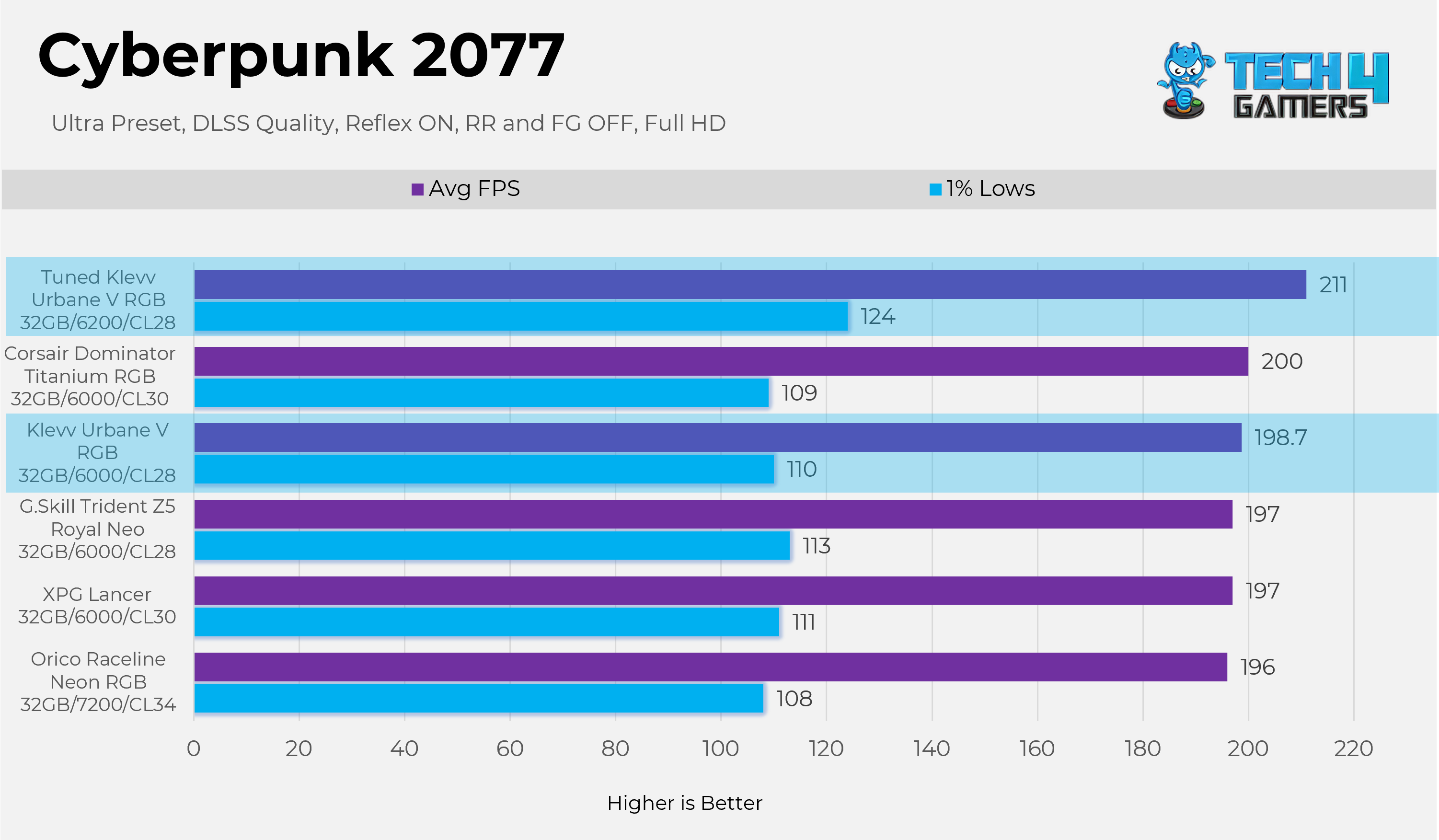
Counterstrike 2
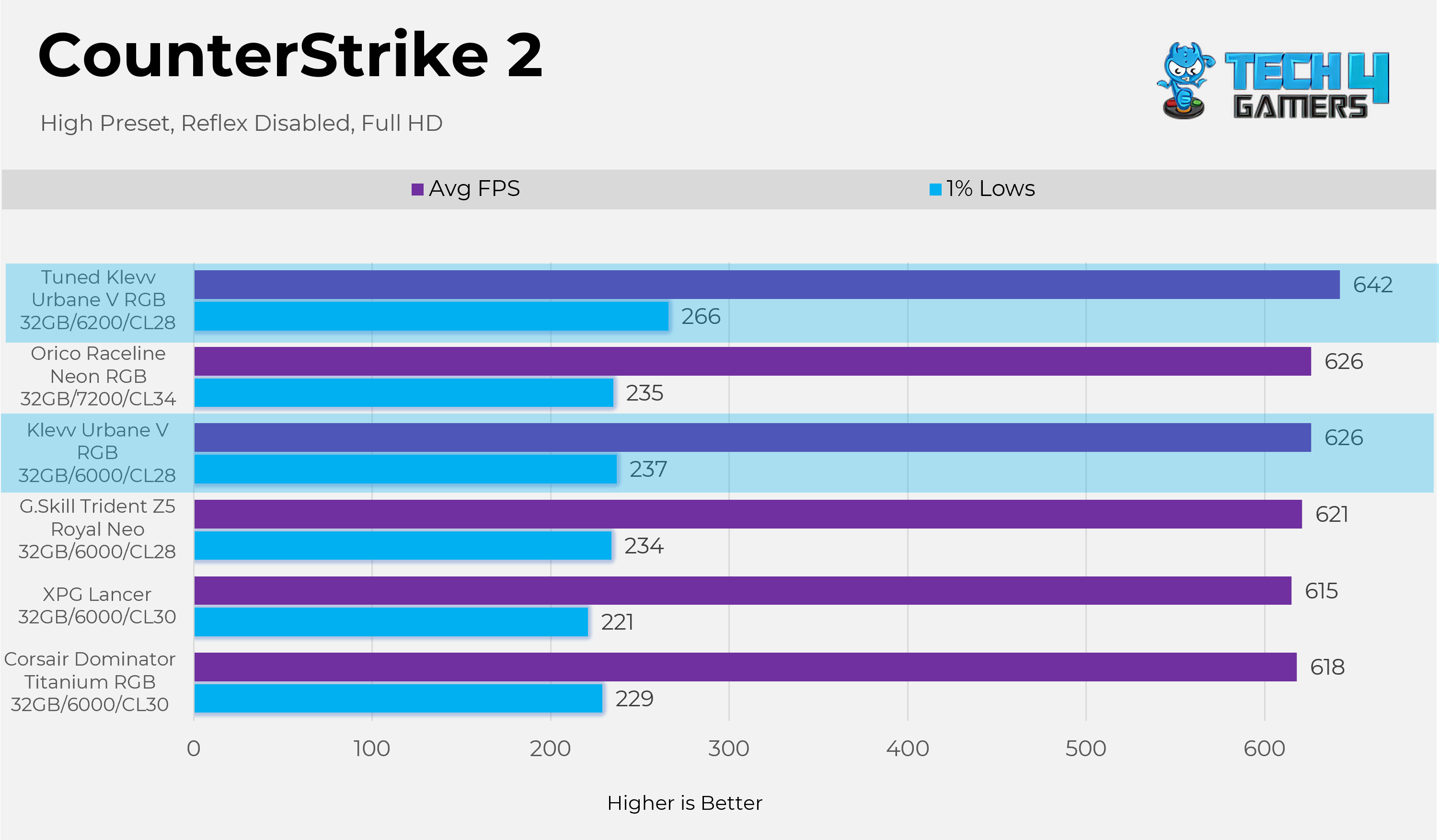
Should You Buy It?
Buy It If
✅ You Want Decent Performance: The key highlight of the Klevv Urbane V RGB 6000MT/s is its well-balanced timings at a decent transfer speed, which contribute to decent frame times in games and improved responsiveness in everyday workloads.
✅ You Need A Compact Design: This RAM is only 42.5mm tall, which will not interfere with large CPU air coolers.
✅ You Need RAM That Overclocks Well: This RAM uses the Hynix-A ICs, which are known for good overclocking.
Don’t Buy It If
❌ If You’re On The Tight Budget: This is a premium RAM with features RGB and low tCL Latency at 6000MT/s. Such RAMs in this category will be more expensive than basic DDR5 RAMs.
❌ If You Have The Small Form Factor Build: Though this RAM is only 42.5mm tall, it can still interfere with a cooler in a cramped SFF-type build. You’re more suitable with low-profile rams that are 31-34mm tall.
Final Thoughts
Klevv Urbane V RGB is a premium RAM that features tight timings, which can be beneficial in gaming workloads, potentially improving frame time consistency, as observed in our charts. Additionally, the performance was outstanding in both compute and productivity workloads. Nevertheless, Klevv has left some performance on the table with its secondary timing and territory timings, which can be optimized if you have the proper knowledge to tweak the memory.
The RAM has a transfer speed of 6000MT/s, which is a sweet spot for existing platforms and supports EXPO and XMP 3.0. The highlight of the RAM is the tight CAS Latency, which is 28 cycles. The RAM comes pre-tuned, so you can install it in your PC without needing to make extra BIOS adjustments.
Furthermore, we have also overclocked the memory to see its potential. This RAM overclocks really well; we had no complaints or stability issues in our moderate overclock. We also adjusted a few very loose timings. Overall, we have seen a decent uplift in gaming performance, about 11% in 1% lows on Counter Strike 2 and 2.5% on average FPS. A similar story in Cyberpunk 2077, where we have gained 12.7% in 1% lows and a nice 6% boost on average FPS. The Cinebench 2024 has also seen an uplift of almost 4% and in Y-Cruncher, around 12% better performance in Y-Cruncher.
We appreciate the minimalist design approach, it strikes a balance between form and function. The ram is only 42.5mm tall, which will work with large air coolers on the market without any issues. This RAM would fit in most PC’s really well. It’s not the basic aluminum kit. I like the approach of rounded edges on the top corners and linear grooves running along the lines. The RGB is perfectly defused, and there are no visible LED hotspots. There are two light strips centered on each module, which creates a symmetrical glow.
Pricing for this RAM is not available at the time of this review, but it is expected to be competitive.
Thank you! Please share your positive feedback. 🔋
How could we improve this post? Please Help us. 😔
I’m Usman Sheikh, a Senior Hardware Reviewer at Tech4Gamers with over a decade of experience in the tech industry. My journey began in 2014 as a senior administrator for Pakistan’s largest gaming community forum. Passionate about PCs and hardware, I specialize in testing and reviewing components like graphics cards, CPU coolers, and motherboards, while also sharing insights on overclocking and system optimization.


 Threads
Threads
